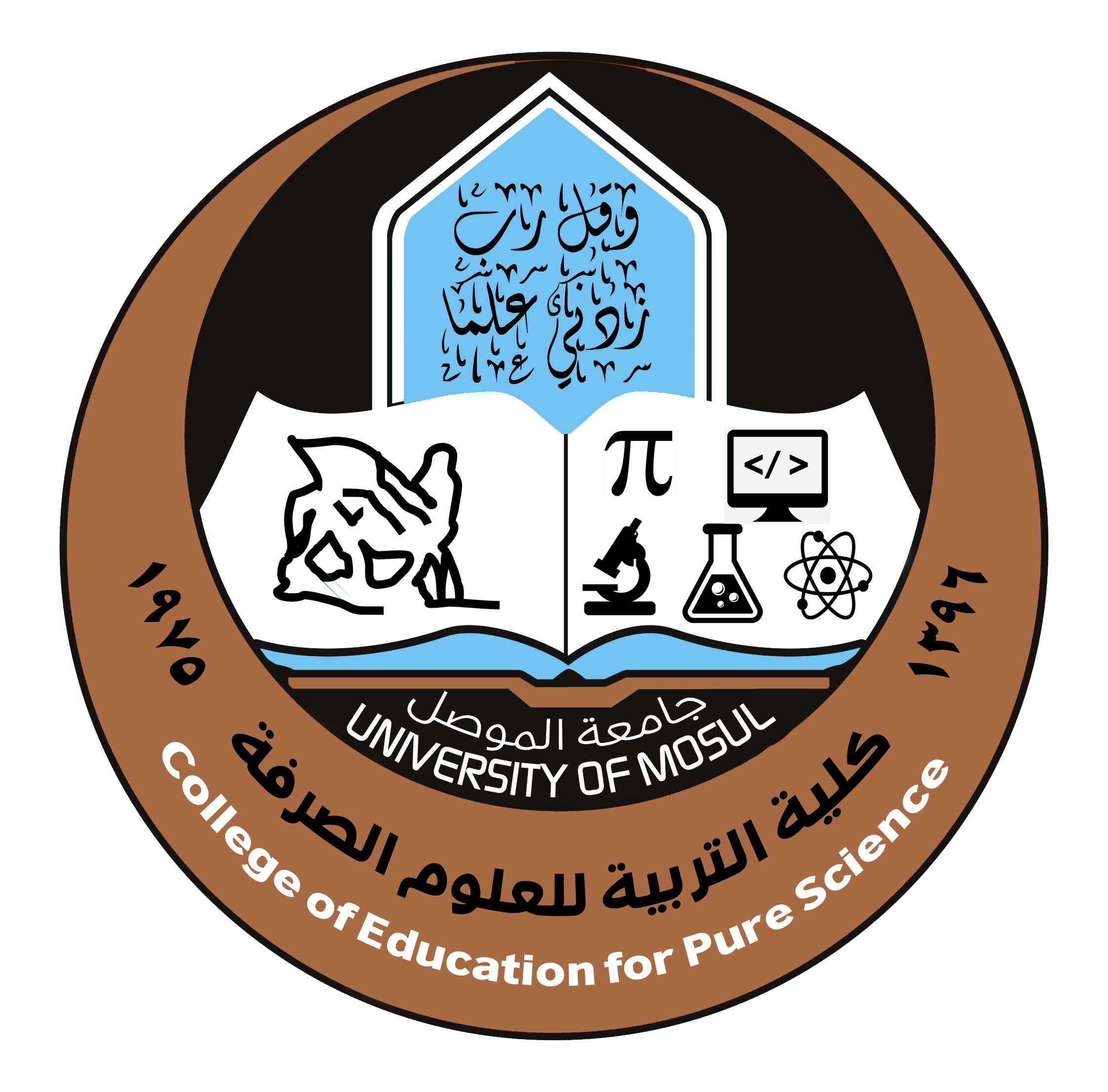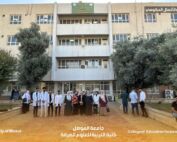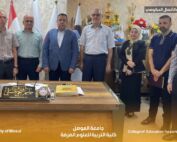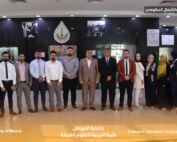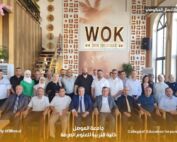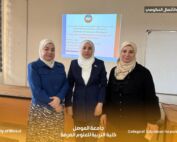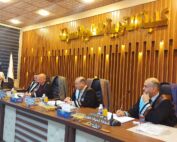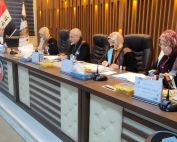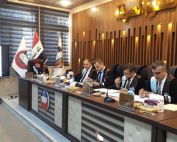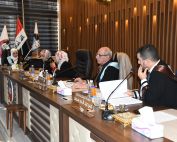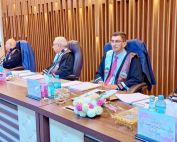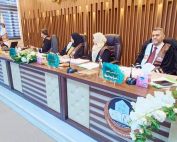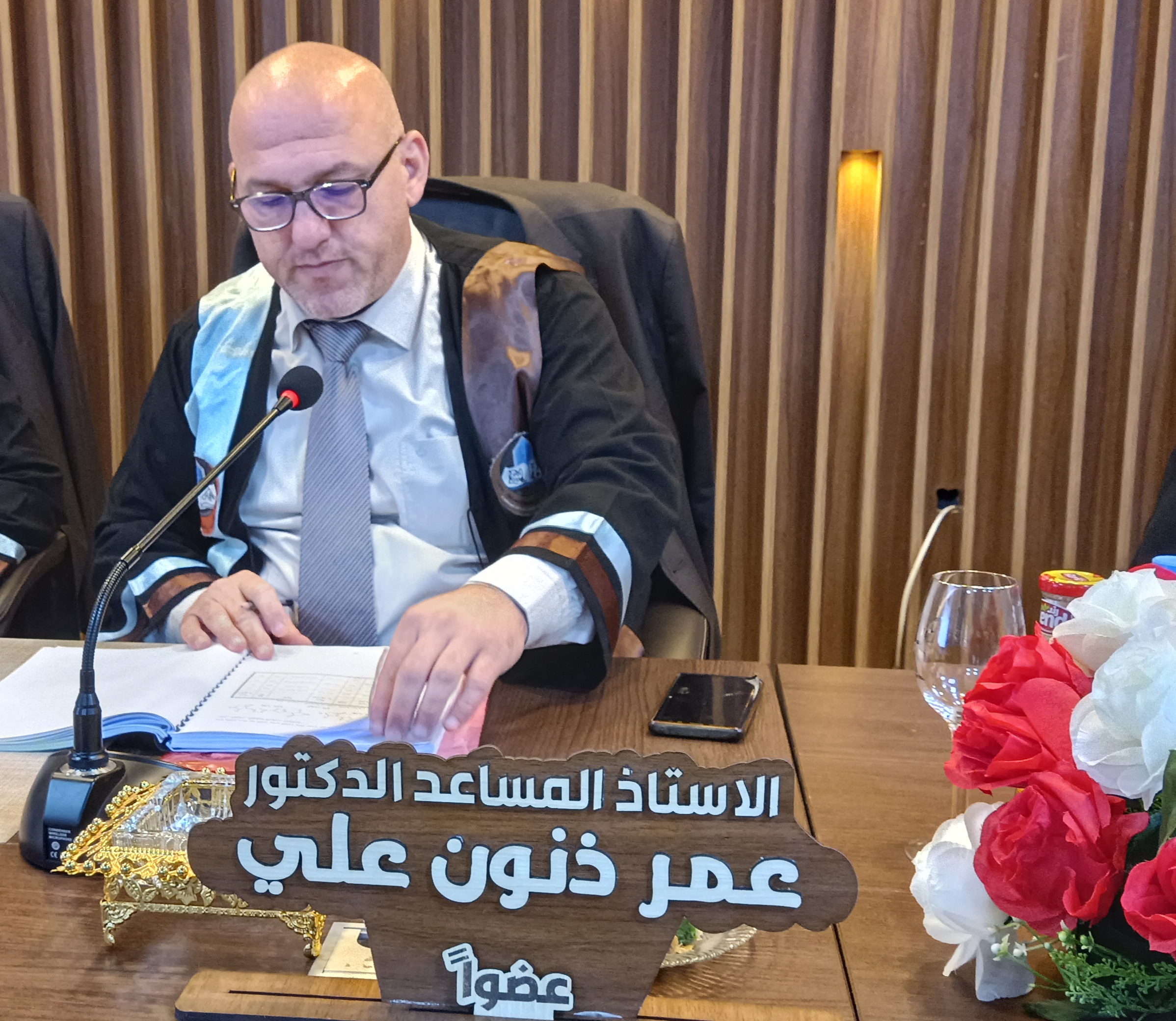10 May، 2022
The M.Sc. Thesis Viva – Department of Chemistry
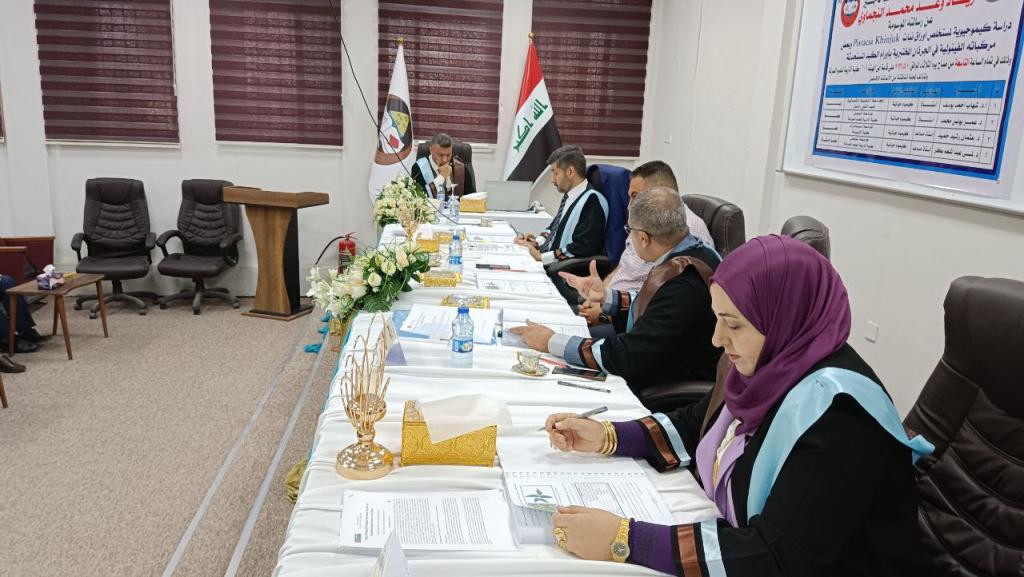
Master’s Thesis Viva in the College of Education for Pure Science entitled “Biochemical study of plant pistacia Khinjuk leaf extract and some of its phenolic compounds in laboratory rats with induced liver tumors”The College of Education for Pure Science, University of Mosul, has done the master’s thesis viva entitled ” Biochemical study of plant pistacia Khinjuk leaf extract and some of its phenolic compounds in laboratory rats with induced liver tumors “,On Tuesday, May 10, 2022, the college staff including the respected Dean of the College, Assistant Professor Dr. Qais Ismail Ibrahim, the Honorable Scientific Associate and Administrative Associate, the Honorable Head of the Department of chemistry, and a number of the college’s teachers were attended the viva.This study, presented by the Master student Zeyad Waad Mohammed Mahmood in the Department of Chemistry, The first part of the study measured and studied some biochemical variables in the blood serum of (male rats) and determined and calculated the median lethality (LD50) of carbon tetrachloride in tumor development and heritability (0.2 mg/kg). The second part included the extraction of leaves of the plant (P. Khinjuk) by solvents according to the Krand method using an electric vibrator (mechanical stirrer), and a marker for the (quantitative and qualitative) diagnosis of some flavonoids in a sample (blood extract) of laboratory rats using HPLC technology). Where the vehicles were diagnosed luteolin, rutin, apigenin, quercetin, epicatechin, catechin, gallic acid). Part of the parts of the third part Dividing the mass aggregates between the parts of the aggregates of one {(plant extract), (medicine), (plant extract and medicine), (carbon tetrachloride), (extracts and carbon tetrachloride), (drug and tetracarbon), (extract The dose of carbon tetrachloride was (200 mg/kg) and for treatment (30 mg/kg) daily by mouth, while the dose of carbon tetrachloride was (0.2 ml/kg) once by injection into the claws. HDL, LDL, VLDL, and enzymes (paraoxinase, alpha-feto, aspartate aminotransferase and protein aminotransferase) using commercial kits for estimated. The third part included four comparisons between the groups:The first comparison: (control: plant extract). The second comparison: Plant extract: plant extract and medicine). The third comparison: (plant extract: extract and carbon tetrachloride). Fourth comparison: (The medicine and carbon tetrachloride: the extract, the medicine and carbon tetrachloride). Where the results were published in scientific research (HDL, GSH, PON2) and a significant decrease in levels (MDA, T.C, TG, LDL, creatinine, urea) (GSH, TC, TG, creatinine) a significant decrease in (HDL), while the third comparison showed a significant increase in the biochemical variables (urea, TC, TG, LDL, AFP, AST, ALT, MDA) and a significant decrease in the biochemical variables (HDL, PON2, GSH). Compared with a significant increase in the levels of (GSH, PON2), a significant decrease in the levels of (MDA, T.C, TG, HDL, LDL, ALT, urea).The study concludes that the use of a dose (200 mg/kg) of body weight of plant extracts, not leaves, of the green bean tree (Pistacia khinjuk) for a period of four weeks has a protective effect against the induced hepatitis (carbon tetrachloride) as well as supporting the natural treatment in the study (sorafenib), the effects The preventive measures led to the return of enzymes and biochemical levels to normal levels, as well as a clear improvement in the liver tissues due to the effect of (carbon tetrachloride) as shown by the histological sections.The discussion committee was chaired by Prof. Dr. Shihab Ahmed yousif Al-Bajar From North Technical College/Technical Institute and the membership of Prof. Dr. Omar Younis Mohammed Al-abbasy From University of Mosul/College of Education for Pure Sciences, Assist. Prof. Dr. Othman Rashid Hameed Al Samarrai From University of Samarra/College of Education and under the supervision and membership of Dr. Luma Abd Almunim Baker Jasim from Mosul University/College of Education for Pure Sciences /Chemistry Department.
